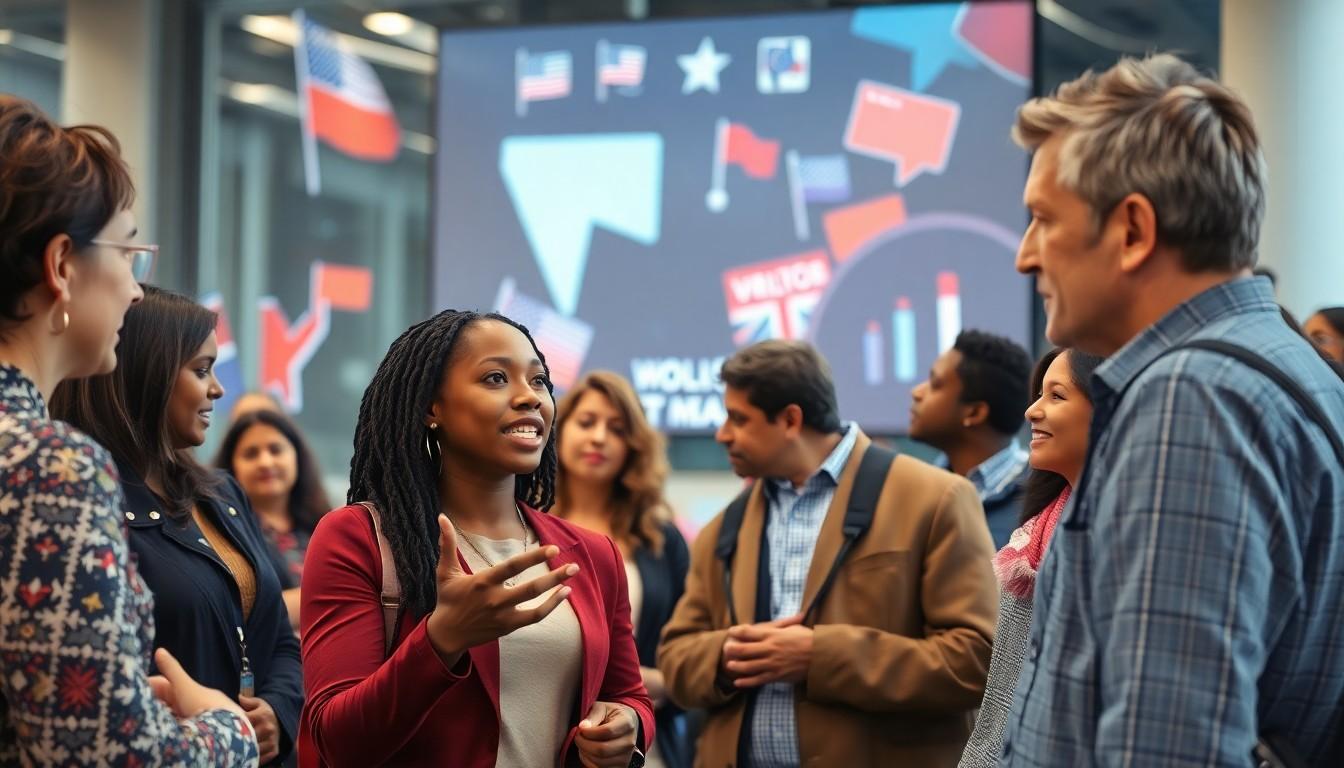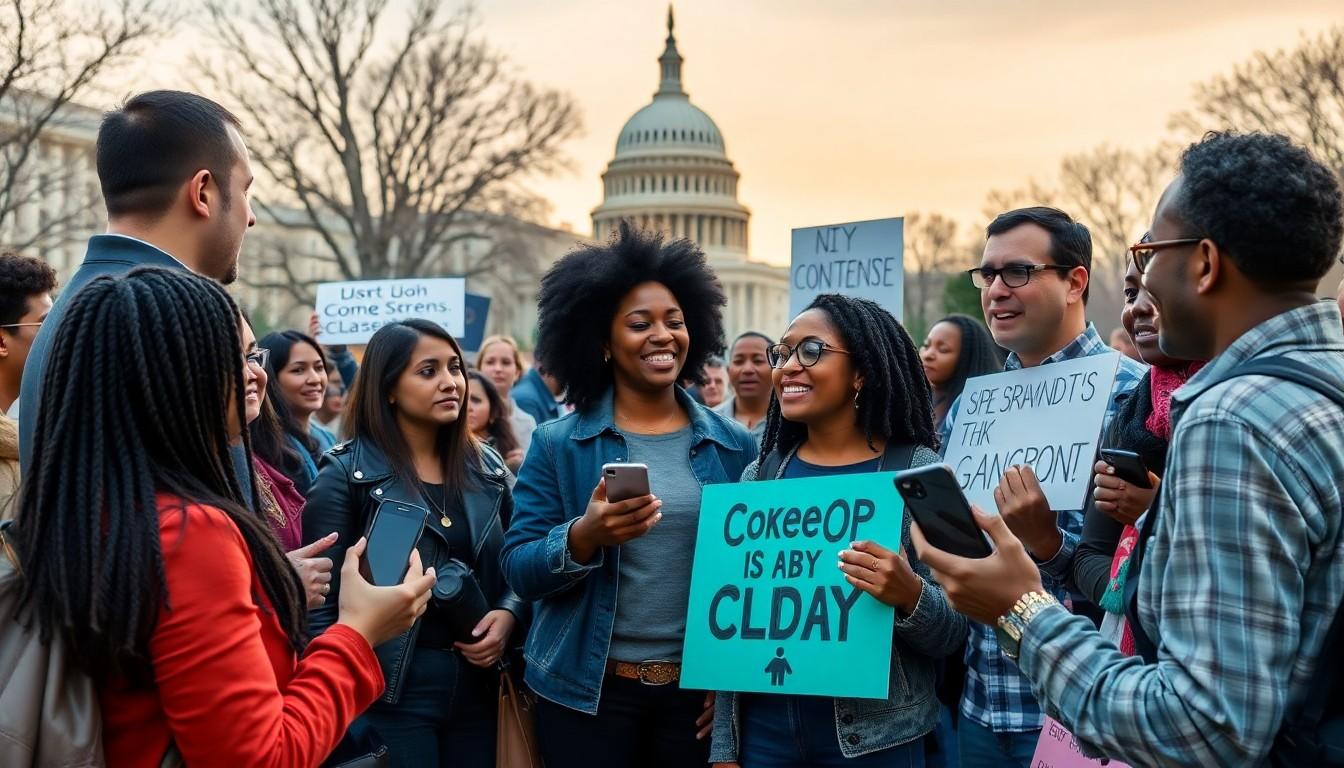Phone:
(701)814-6992
Physical address:
6296 Donnelly Plaza
Ratkeville, Bahamas.

In a world where political debates often feel like a circus, understanding political channels can be the secret weapon for navigating the chaos. These platforms serve as the megaphones for diverse voices, shaping opinions and influencing decisions. Whether it’s a late-night talk show or a fiery podcast, political channels are where the drama unfolds.
Political channels encompass various platforms that disseminate information and opinions about governance and policy. These channels serve as vital conduits for communication, enabling individuals to engage with political discussions and debates. Late-night talk shows offer humor mixed with political commentary, attracting millions of viewers and shaping public perceptions.
Podcasts provide an accessible medium for in-depth exploration of political issues. They often feature expert interviews and diverse opinions, fostering nuanced discussions that may not occur in traditional media. Social media platforms, like Twitter and Facebook, allow for rapid dissemination and reaction to news, creating a dynamic landscape for political discourse.
Additionally, news websites and blogs create spaces for analysis and opinion. They contribute to a more informed citizenry by covering stories that might not receive mainstream media attention. Community forums encourage grassroots engagement, allowing voices from different demographics to participate in political conversations.
These channels significantly influence public opinion and voting behavior. Research indicates that regular consumption of politically focused media correlates with increased civic engagement. Political channels drive conversations around critical issues, empowering citizens to advocate for change and hold leaders accountable. Through these platforms, the citizenry gains access to a broader range of perspectives, fostering a more vibrant democratic process.

Various types of political channels exist, each with unique roles in shaping public discourse.
Traditional media includes television, radio, and print outlets. These platforms provide reliable news coverage and analysis, reaching millions daily. Television news programs present updates on political events, often accompanied by expert commentary. Newspapers publish investigative articles that uncover critical political issues and hold officials accountable. Several radio shows facilitate discussions and interviews with political figures, bringing diverse perspectives to listeners. Traditional media remains essential, as it sets the agenda for political conversations and often influences the public’s understanding of current events.
Digital media encompasses online news websites, blogs, and social media platforms. These channels allow for immediate dissemination of information, fostering rapid engagement with audiences. Social media platforms like Twitter and Facebook enable users to share opinions and react to news stories in real-time. Numerous blogs feature political analysis and commentary, catering to niche audiences often overlooked by mainstream media. Online content encourages interactivity, prompting discussions among users and creating communities around specific political topics. Digital media’s flexibility and accessibility ensure it significantly influences modern political discourse.
Grassroots movements empower ordinary citizens to engage in political processes. These movements often emerge from local issues, drawing together individuals who share common goals. Activism facilitated by grassroots organizations promotes awareness of social justice, environmental concerns, and political reform. Many movements mobilize supporters through community events, petitions, and social media campaigns. Significant successes stem from grassroots efforts, showing that collective action can lead to meaningful political change. Grassroots movements inspire personal investment in political issues, highlighting the importance of citizen involvement in shaping governance.
Political channels significantly shape contemporary political discourse. These platforms engage the public and foster discussions on critical issues.
Late-night talk shows and podcasts serve as catalysts for shaping public opinion. They’re able to amplify diverse perspectives, making political issues more relatable and easier to understand. Research indicates that exposure to politically focused media correlates with greater civic engagement. Audiences often develop their viewpoints through the information presented in these programs. Conversations sparked on social media further influence individual beliefs. Moreover, the interplay between different media formats creates a multi-faceted understanding of political topics, allowing citizens to form informed opinions.
Political channels play a crucial role in elections by informing voters about candidates and policies. News coverage, debates, and analyses shape voters’ perceptions leading up to election day. Traditional media outlets inform the public about election-related developments. Interactive discussions on digital platforms engage potential voters and encourage participation. Research shows that politically engaged individuals are more likely to vote. Grassroots movements utilize these channels to mobilize supporters and increase voter turnout. Ultimately, political channels energize the electorate and contribute to a more informed voting base.
Political channels face significant challenges that affect their effectiveness and credibility in shaping public discourse. Two major concerns include misinformation and disinformation, as well as regulation and censorship.
Misinformation spreads easily through various political channels, resulting in confusion regarding critical issues. Disinformation campaigns deliberately introduce false narratives, often targeting specific groups to manipulate opinions. Research indicates that 59% of adults encounter misinformation regularly via social media and other digital platforms. Factors contributing to the spread of inaccurate information include sensational headlines and clickable content designed to generate engagement rather than inform. Trust in political channels diminishes when audiences cannot discern fact from fiction, leading to voter apathy and polarization.
Regulation and censorship present obstacles for political channels aiming to ensure free expression. Striking the right balance between limiting harmful content and preserving free speech remains contentious. Regulatory frameworks often lag behind technological advancements, causing confusion in enforcement. In some cases, government intervention influences news coverage, while platforms may censor varying perspectives to avoid backlash. These dynamics create an environment where content creators navigate complex rules, impacting the diversity of viewpoints that political channels can provide. Recent surveys show that 43% of content creators feel constrained by policies, affecting their ability to engage audiences effectively.
Future trends will significantly shape the landscape of political channels. Technological advancements will enhance how information is shared and consumed.
Emerging technologies play a pivotal role in transforming political channels. Artificial intelligence improves content curation, personalizing user experiences based on preferences. Virtual and augmented reality create immersive experiences for voters, bringing political events to life. Blockchain technology enhances transparency in information sharing, combating misinformation by ensuring data integrity. Increased use of mobile applications allows for instant access to political updates, fostering engagement among younger demographics. As technology continues to evolve, political channels will likely incorporate these innovations to facilitate informed participation and discourse.
Shifts in consumer behavior significantly influence the effectiveness of political channels. Increasingly, audiences prefer bite-sized content, leading to a rise in short video formats and infographics. They often seek authenticity, gravitating towards sources perceived as credible. Social media enables two-way communication, allowing citizens to interact directly with political figures and organizations. Younger generations prioritize platforms that promote engagement over traditional media formats. Moreover, consumers are more inclined to support channels that align with their values, driving demand for content that reflects diverse perspectives. These behavioral changes will shape how political channels produce and disseminate their content moving forward.
Political channels are essential in shaping the modern political landscape. They amplify diverse voices and encourage informed discussions on critical issues. As technology evolves and consumer preferences shift, these channels will continue to adapt, fostering greater engagement and participation in the democratic process.
While challenges like misinformation and censorship pose significant hurdles, the potential for innovation remains strong. By embracing new technologies and prioritizing authenticity, political channels can enhance their role in empowering citizens and promoting a more vibrant democracy. The future of political discourse hinges on the ability of these platforms to navigate complexities while remaining committed to transparency and inclusivity.